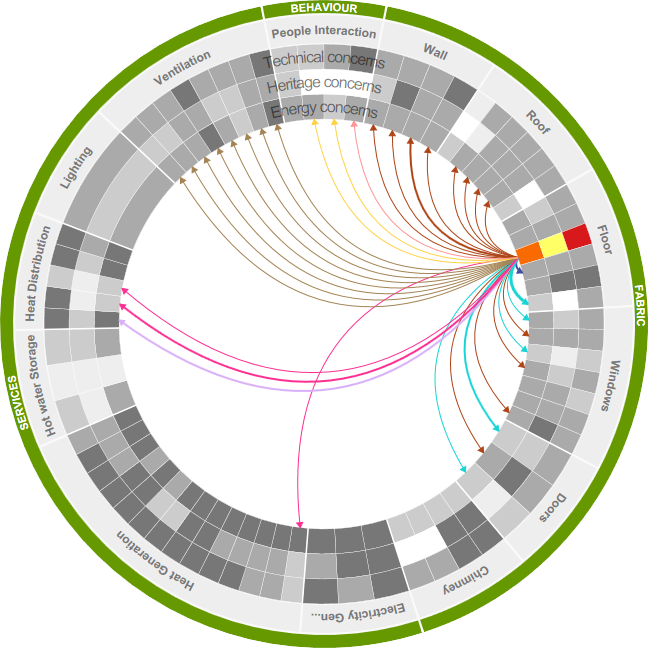Concern & action: Increased infiltration
Unintended increase of air permeability caused by the installation of a new technology/alterations that require penetration of the building envelope (such as a new boiler flue, solar hot water or photovoltaic panel installation, relocation of kitchen sink waste pipe etc.). This can lead to unintended higher energy use and interstitial moisture problems.
Suggested actions
Before Implementation
Carry out air permeability test to establish level of air tightness. Ensure all services installers are aware of the buildings air tightness levels and impact of service penetrations on reductions to air tightness.
During implementation
Require all penetrations through walls, roofs and floors to be sealed back to retain the same level of air permeability.
After implementation
Carry out a post installation air tightness test to check levels have remained the same.
RELATED MEASURES
 SERVICES (14)
SERVICES (14)
High efficiency gas-fired condensing boilers
Oil-fired condensing boilers
Air source heat pumps
Ground/Water source heat pumps
Biomass boilers
Biomass stove with back boiler
Solar water heating
Communal heat generating system
Micro combined heat and power
Background ventilators and intermittent extract fans
Passive stack ventilation
Passive stack ventilation with heat recovery
Passive stack ventilation with demand control ventilation
RELATED REFERENCES (2)
The Performance of Traditional Buildings: the SPAB Building Performance Survey 2013 (2013)
Rye, C, Scott C & Hubbard, D.
The Impact of energy efficient refurbishment on the airtightness in English dwellings (2006)
Hong,S., Ridley, I., Oreszcyn, T., and the Warm Front Study Group

